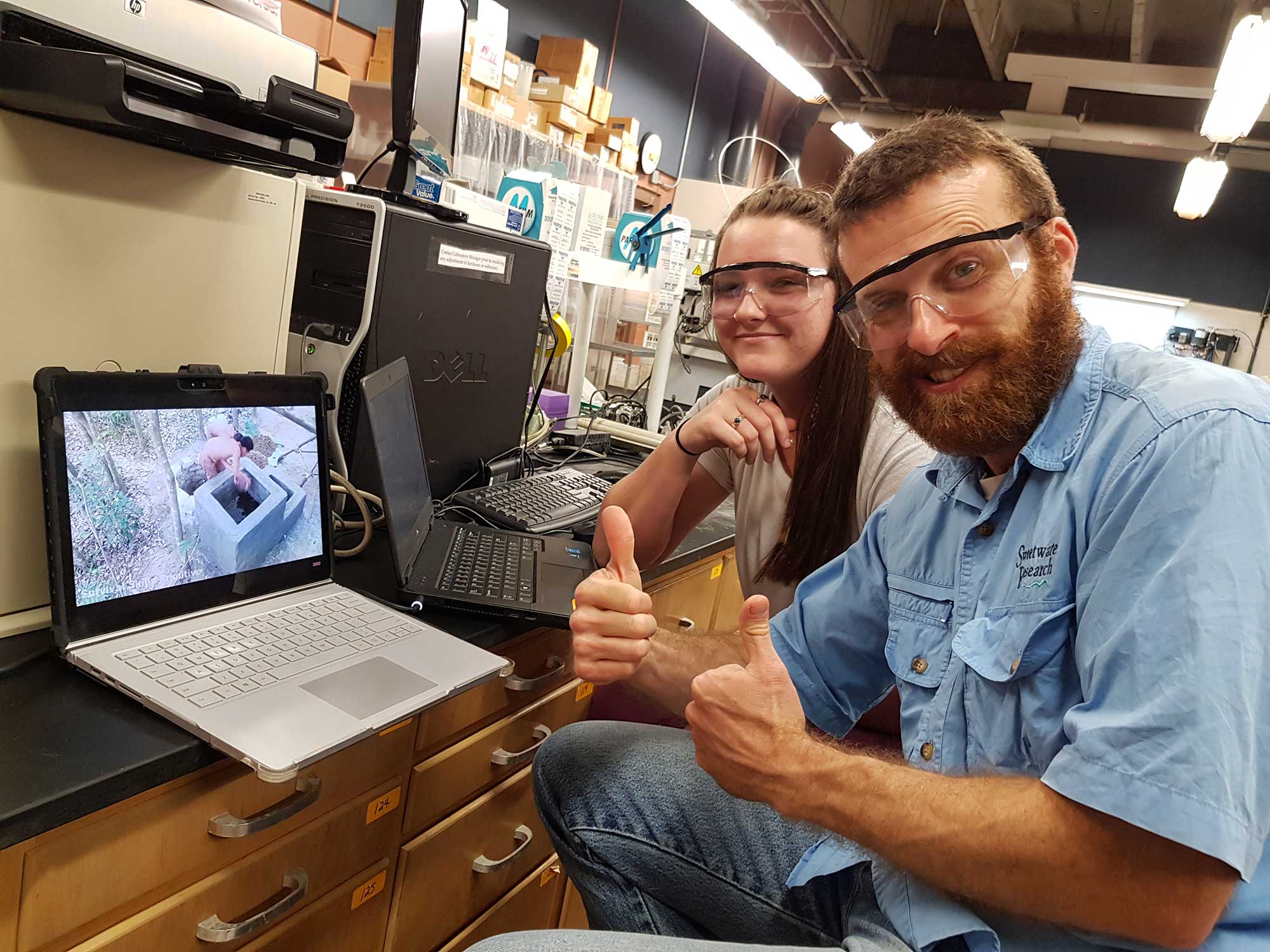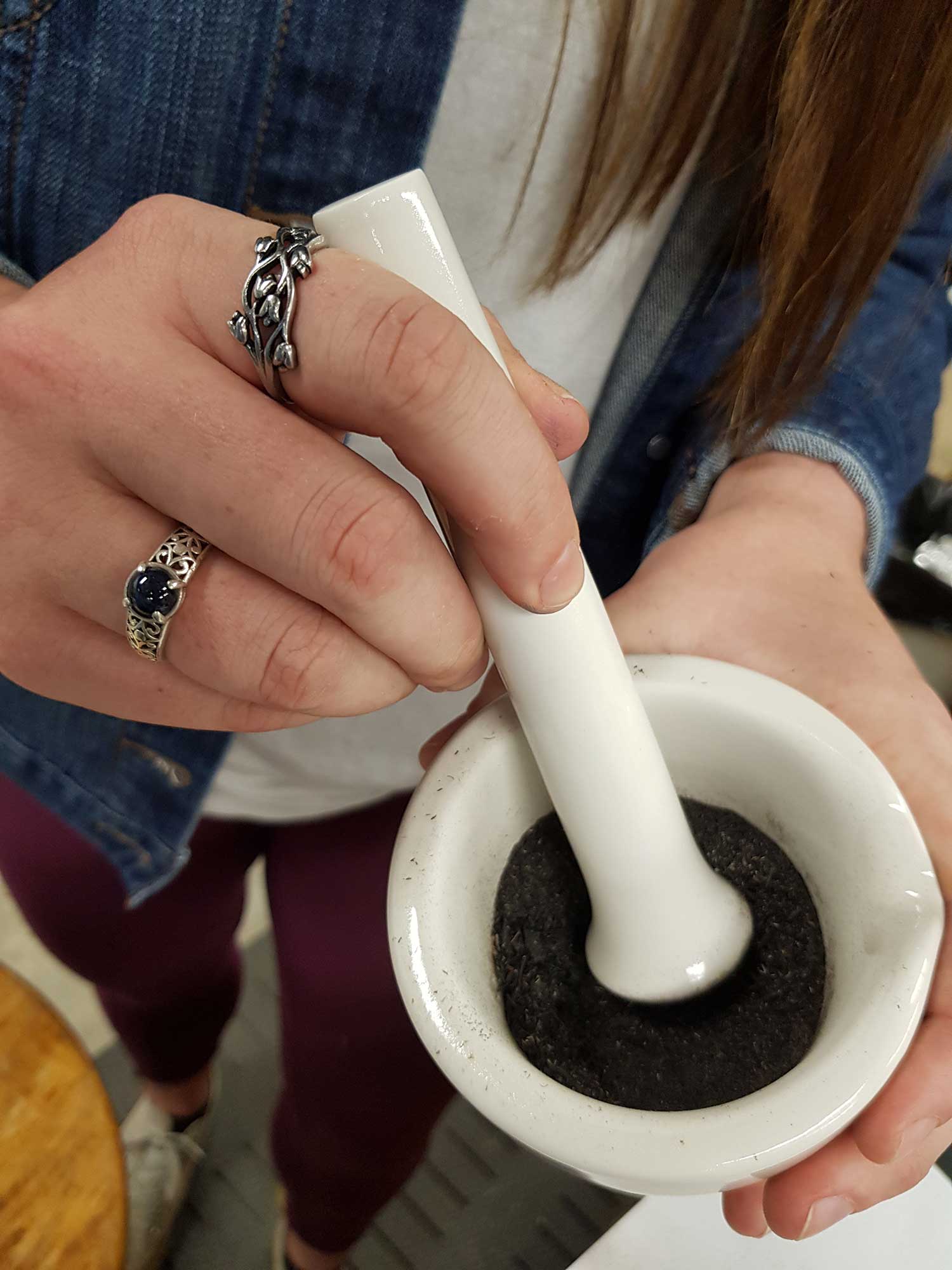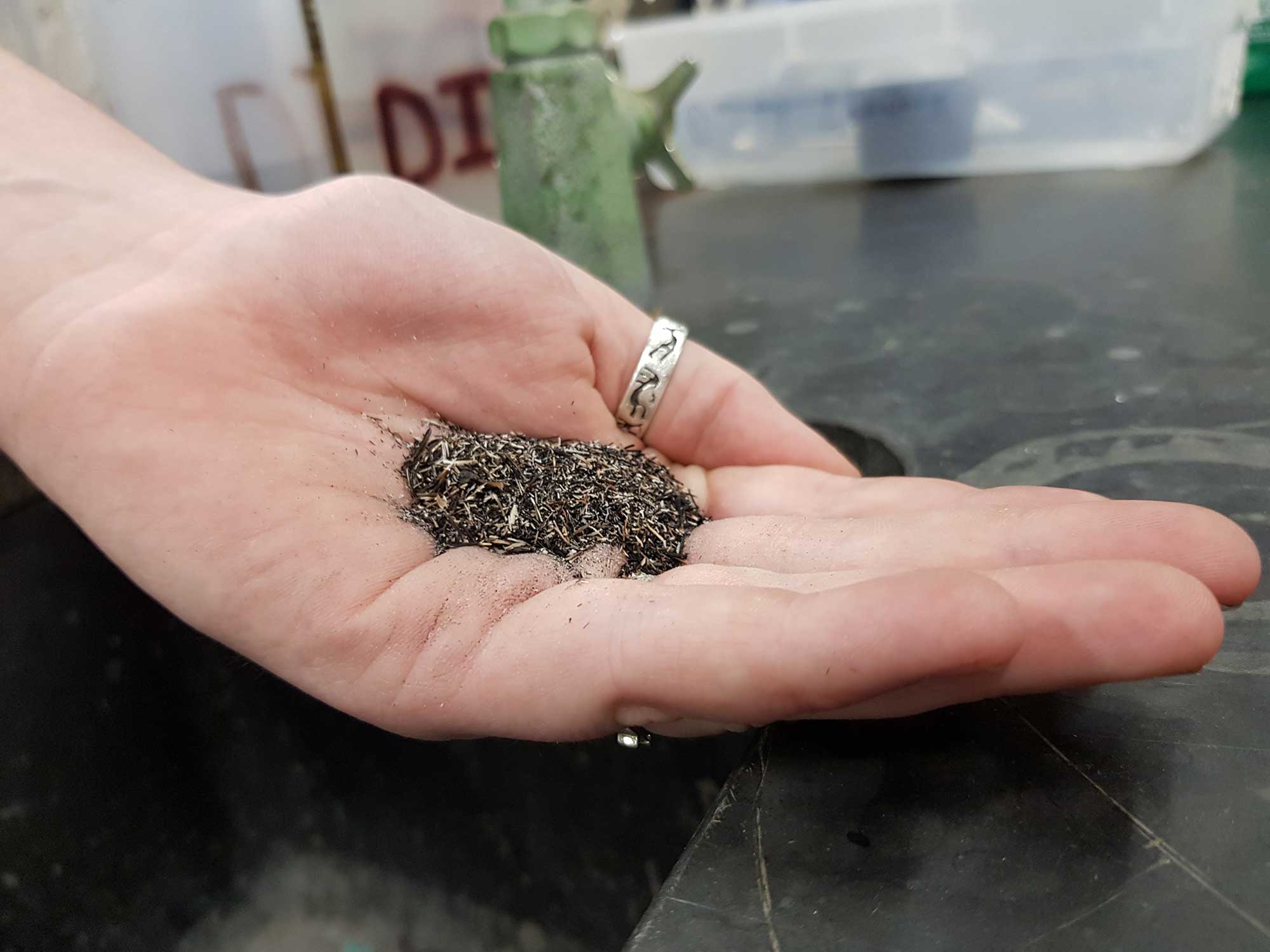Today, March 27th, is the first day of our experiment testing the effectiveness of rice hull ash to remove orthophosphorus from water (Orthophosphorus is a form of nutrient phosphorus that is associated with sewage pollution and is readily available for plants and microbes to consume. For more information on why phosphorus matters, read my previous blog on phosphorus). We will heat the rice hulls to ash in order to break the carbon bonds. This will allow the rice hulls to act as a sponge with greater surface area, attracting phosphorus molecules so that the phosphorus and the rice hulls can be easily removed from the water solution. After the ash is ground in a mortar and sifted to below .35mm, we will use the ash as a phosphorus magnet in flasks with a known concentration of orthophosphorus and we will test how much phosphorus was bound by the ash. This simple lab experiment is the first step towards determining whether rice hulls, a common and inexpensive agriculture waste product both in the U.S. and in tropical non-industrialized societies, is a viable component of reducing problems associated with nutrient enrichment in small water catchments. If successful, the leftover rice ash with bound phosphorus can be recycled as garden fertilizer. Honestly, I have been eager to start this experiment, probably because this is one of the most interesting and important things I have ever done, but also because my time at Sweetwater Research and Texas Institute for Applied Environmental Research are quickly coming to an end.
While we were preparing for this project, David had an interaction with a man who has been involved in foreign missions to an area that David has had his eye on for a while. This missionary says that accessibility to clean water is a major issue in one of the villages in S.E. Asia. Some homes in the village have received small filtration systems, but this missionary thinks they could really use a pre-filter to extend the life of the home filters. David was tasked with coming up with a pre-filter system so he assigned me to research preliminary information.

I have worked in the outdoor recreation industry for the past 3 years as a tour guide and a camping trip leader. There is a water filtering system that I have used that involves things that can easily be found on a hiking trail or in a hiker’s pack. This method involves a plastic bottle, something to catch the clean water, charcoal, sand, and pebbles. Come to find out, the missionary working in S.E. Asia has experience with a similar technique. As I started my research on alternative pre-filtering methods, I became discouraged, because all of the filtration systems worked and looked exactly the same as the survival technique that I was taught for the trails. Two thoughts immediately came to mind: 1) there is no way this filtering system scaled for a backpacker can supply a village with the water that they need, and 2) what about the carcinogenic BPA’s found in those plastic bottles? Surely there is another way.

The scholarly, peer-reviewed articles I found were turning up the bottle-with-charcoal technique over and over. So naturally, I went where all people should go for inspiration: YouTube. I searched “DIY water filtration system,” and I clicked the best matches in the results. After scouring the “Tubes” for a while, I located a video that showed two young men from a tropical country, digging a well and building a large-scale filtration system from the clay they had pulled out of the ground.
These two exceptionally-hard-working guys took the technology that I thought was lame, basic, and impractical, and they used it productively for their people. They used the same filtration supplies: charcoal, sand, and rocks. The only thing that differed was swapping the nasty plastic out for locally sourced clay. What is even more awesome is that our controlled lab experiment with the rice hulls could produce an accessible, environmentally friendly, and locally sourced replacement for the coal those boys demonstrated using their water filtration system. Using the ashed rice hulls as charcoal could also reduce the side effects from having to burn wood, such as dirty air and deforestation.
Watching this video inspired me. I went to researching the geology and soils of the location that David has his eye on in S.E. Asia, to assess the feasibility of training villagers to use their local clays for cleaning water in a similar fashion to what was demonstrated in the video. Doing this from the other side of the planet isn’t, by any means, an easy task. We could easily fly our Western technology overseas to any distraught area and treat most of the symptoms of water degradation… for a little while at least. Sweetwater aims to demonstrate how a community can help themselves by seeking wisdom from our Creator God how to utilize the natural resources He has gifted them. The take away from this video is that although the location and the ecology may vary, the central concept remains the same – keep it simple. Use what’cha got.


